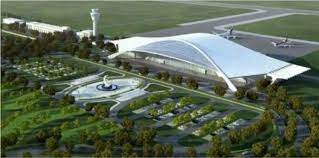ISLAMABAD: In a significant development, high-tech navigational system has finally come into force at New Gwadar International Airport, ensuring fully operation of sensor and signaling processes, aeronautical positioning mechanism and flight management systems.
The navigation system is integral for determining an aircraft’s coordinates, altitude, speed and other parameters. It exploits geo radio positioning through a network of artificial satellites in orbit.
“NGIA navigational system configure the autopilot to follow the route set before take-off and it also configure the take-off and approach routes and the information indicated by the flight controllers.
It helps to calculate the flight parameters, recommend the power settings, to reduce fuel consumption and estimate the arrival time within the route,” Civil Aviation Authority of Pakistan (CCCP) official said.
Along with the functionality of Navigation system, telecommunication work has also gone into operation with top-notch wifi system.
NGIA’s state of art telecommunication paraphernalia involves telecom networks and systems that use various technologies and protocols to facilitate the transmission of voice, data, and audio-video signals between devices, including smartphones, computers, and other communication devices.
New Gwadar International Airport (NGIA), an iconic project of China Pakistan Economic Corridor (CPEC), cost Rs. 60.208 billion (Rs. 33 billion from Chinese grant and Rs. 27 billion from Pakistani and Omani government side).
With the joint effort of professional teams of China Communications Construction Company (CCCC) and Civil Aviation Authority (CAA) Pakistan, fencing around the New Gwadar International Airport has already been completed.
New Gwadar International Airport spreading over across an area of 4,300 acres will welcome entire load of national and international passengers.
In second phase, cargo complex will be built and it will come up with new capacity to handle multiple cargo stuff. NGIA will be the biggest in Pakistan and will also become the nation’s second airport.
It will have the capacity to accommodate narrow-body aircraft such as ATR 72 and Boeing B-737, as well as wide-body aircraft such as Airbus A-380 and Boeing B-747 for domestic and international routes.
The airport will be operated under open sky policy and will be developed under the guidance of the Civil Aviation Authority (CAA).























